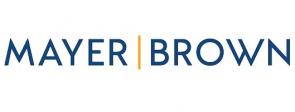
1. What is the benefit of adopting a continuous feedback model in attorney performance evaluations?
The continuous feedback model allows for real-time performance improvement by providing immediate feedback on an attorney's performance. Frequent check-ins ensure open communication, allowing for prompt identification and resolution of issues. This model encourages a proactive and positive mindset, fosters a culture of constant improvement, and builds trust and engagement between attorneys and managers.
2. How does real-time performance tracking contribute to attorney performance evaluations?
Real-time performance tracking provides immediate insights into an attorney's performance, allowing for quick adjustments and improvements. It enables the timely recognition of achievements and prompt addressing of performance issues. The data gathered can provide a factual basis for decisions about promotions, raises, and professional development opportunities. This approach also enables the identification of long-term performance trends, aiding in developing effective performance improvement strategies.
3. What are the key components of development-focused evaluations?
Development-focused evaluations focus on fostering professional growth rather than simply assessing past performance. They include strength-based reviews, career path discussions, the creation of personal development plans, the provision of learning and training opportunities, and the implementation of coaching and mentorship programs. Such evaluations are designed to nurture attorney talents and guide them toward their professional goals.
4. Why is peer feedback a significant part of modern attorney performance evaluations?
Peer feedback provides diverse perspectives on an attorney's performance, enhancing the comprehensiveness of the evaluation. It fosters a learning culture and increases accountability, as attorneys know their peers observe their performance. Peer feedback also reduces bias in evaluations, as it relies on multiple input sources.
5. How does integrating performance reviews with training and development programs enhance attorney evaluations?
The integration identifies development needs from performance reviews and provides targeted solutions through training and development programs. It fosters a culture of continuous learning, ensures alignment with career aspirations, and allows tracking of progress in real-time. This integration supports the holistic development of attorneys, enhancing their capabilities and contributing to the firm's success.
The approach to performance reviews for attorneys is undergoing a seismic shift. Traditional, annual reviews are being replaced by modern approaches to attorney performance evaluation. These innovative methods aim to both assess current performance and maximize potential in attorney evaluations. With an enhanced focus on attorney development, law firms and legal employers are embracing transformative approaches to attorney reviews, fostering a dynamic, data-driven, and development-centric culture.



